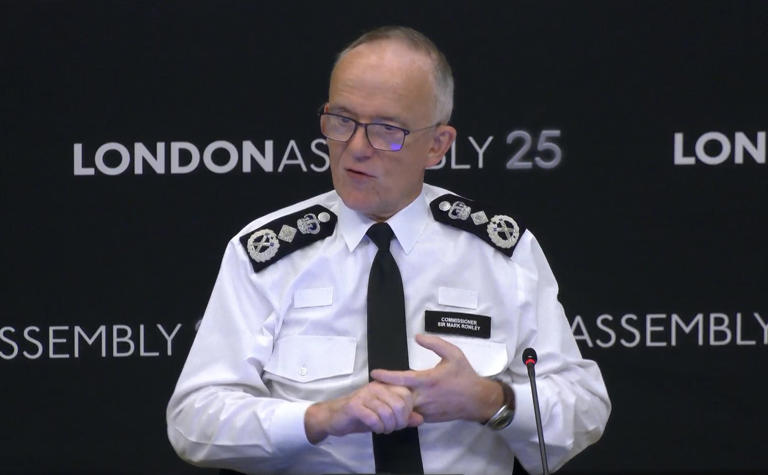The latest crime figures paint a worrying picture for the capital as new data reveals that London’s overall crime rate rose by 11 per cent over the past year, with the City of Westminster emerging as the borough with the highest number of reported offences.
According to figures released by the Office for National Statistics (ONS) and police.uk, nearly 100 crimes occur every day in London, ranging from petty theft to violent robberies. Westminster, the heart of the capital and home to Britain’s most famous landmarks, remains at the centre of this rising tide of crime.
Westminster: London’s Crime Hotspot
The City of Westminster, located in central London, is one of the busiest and most visited areas in the United Kingdom. It houses landmarks such as Buckingham Palace, the Houses of Parliament, Trafalgar Square, and Oxford Street. Yet behind its glittering image lies a troubling trend, a persistently high crime rate that far exceeds the London and national averages.
In the year ending March 2025, Westminster recorded around 350 crimes per 1,000 residents, according to official figures from police.uk. Other data sources paint an even bleaker picture: between September 2024 and August 2025, the borough reported 498 crimes per 1,000 residents, ranking it ninth out of ten in terms of safety, according to Crystal Roof.
Statistics from Varbes show that by September 2023, the borough had recorded 89,760 incidents, a 25% increase compared to the previous year. Theft remains the most common offence, with over 62,000 theft-related crimes, accounting for nearly a third of all incidents. Violent crime, while less frequent, still numbered over 11,500 offences, roughly 5.5% of the borough’s population.
ONS data showed that Westminster recorded the highest number of robberies (3,612), followed by Lambeth (1,980), Southwark (1,971), and Newham (1,743). The safest boroughs included Kingston upon Thames (201) and Richmond-upon-Thames (273).
Despite some areas showing improvement, with robbery rates in London falling by 4% compared to the previous year, Westminster continues to top the charts for total offences. Officials attribute this to the borough’s unique character: dense commercial zones, tourist attractions, and a vast daytime population that far exceeds its resident count.
Experts warn that Westminster’s “high crime rate” figures should be interpreted cautiously. The borough’s population swells daily with commuters, workers, and tourists, inflating the per-resident crime statistics.
Theft and pickpocketing, especially of mobile phones, luxury watches, and handbags make up a significant share of Westminster’s total offences. The area’s bustling streets, nightlife, and shopping hubs such as Oxford Street and Soho create prime opportunities for opportunistic criminals.
Recent months have seen a string of high-profile robberies drawing attention to the issue. In June, veteran broadcaster Selina Scott, 74, was violently attacked and robbed near a Waterstones bookshop in Piccadilly. The assault left her shaken and without money to get home.
Met Police Commissioner Sir Mark Rowley later apologised publicly, admitting that officers “weren’t able to give the service that we would expect on that day.”
In another shocking case, illegal migrant Ahmed Djidi, 26, was sentenced to 22 months in prison for his role in a gang that robbed Tim Hortons executive Axel Schwan of his £65,000 Patek Philippe watch in New Bond Street, Mayfair. The gang had targeted Schwan and his wife, with Djidi acting as a lookout for “valuable wrists” before the luxury timepiece was snatched.
Police and City Hall Respond
In response to rising crime, Mayor Sadiq Khan’s office has pledged to step up action. A spokesperson for the Mayor stated: “Nothing is more important to the Mayor than keeping Londoners safe. Thanks to record investment in the police and London’s Violence Reduction Unit, robbery rates have fallen by 13 per cent compared to the same period last year.”
The Metropolitan Police has also increased visible patrols, with specialist teams boosted by 50 per cent in hotspot areas such as the West End. An additional 90 police officers are now assigned to town centre teams targeting robbery, shoplifting, and mobile phone theft.
While Westminster’s raw crime figures are alarming, experts note that most offences are non-violent and opportunistic, targeting the vast transient population rather than residents. Nonetheless, the borough’s reputation as London’s crime capital remains a concern for businesses, visitors, and policymakers alike.
The data underscores the need for targeted policing, smarter surveillance, and community engagement to ensure that one of London’s most iconic districts remains both vibrant and safe.
As the capital grapples with rising offences, Westminster’s challenge is clear: balancing its status as the beating heart of London’s culture and tourism with the urgent need to curb crime on its streets.
Read Also:
Ex-Labour councillor charged in Westminster ‘honeytrap’ scandal
NatWest boss Thwaite cautions against higher bank taxes amid 30% profit surge
Southwest APC LG chairmen declare support for Tinubu’s 2027 re-election bid



